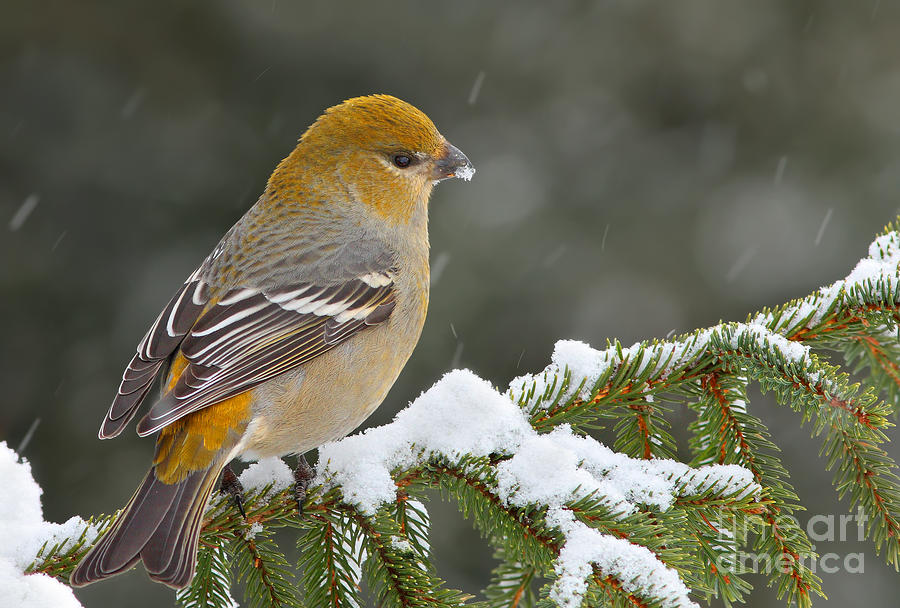Colour birds
Sorry about my absence it was just first I had homework then I have to do after school clubs everyday of the week, so by the time I get home and on the weekends I have to go to Leicester and and London so I haven't had time over the past few days/weeks. So for the last few minutes I have been working on some fact files of the birds and this is what I have got for you.
Pine Grosbeak
This very large finch combines the bull neck, the uncrossed and wonderous body of a Bullfinch with the beautiful plumage pattern of the spectacular Crossbill and which I will be writing about tomorrow! Males are bright red and grey, and females bronze green or yellow both have double white white wingbars on black wings. They are shy when breeding but this forest bird is not very frightened of people or dangerous when it feeds on berries on gardens and any type of streets in winter!
voice:This has a lovely voice and its songs are like whistling or piping calls ( yodeling song).
nesting: It's an untidy stash of twigs low down on the branch close to the trunk of a pine tree. The months May-July are the three months that they lay eggs and they lay about 3-4 eggs .
feeding:They usually eat a range of Buds,shoots,seeds,rowan,juniper and other berries and insects during breeding.
similar species:Bullfinch, crossbill and Parrot Crossbill.
BEE EATER
This amazing exotic looking bee eater is unmistakable when seen in daylight, for no other European bird has its combo of bright colors. Its shape is unique and its actions are even distinctive in silhouette. That's all for the intro as I'm running out of time.
 As you can see the two genders are the same color and the same thing really so you wouldn't be able to tell the difference.
As you can see the two genders are the same color and the same thing really so you wouldn't be able to tell the difference.
Voice: The voice enriched in the bee eater is distinctive soft, far carrying, deep and the prroop prroop sound is given in chorus from passing flying flocks.
Nesting: It digs burrow in sandy banks or flattered grounds it nests in colonies. It lays 4-7 eggs and breeds May-June.
Feeding: This amazing bird catches insects in flight including bees,wasps,butterflies and dragonflies.
Similar species: One of the similar species to this is the common but close up Super Starling.
Kingfisher
This bird is my favorite king bird it is beautiful and rare you can only see these birds by sandy
banks.
Usually this bird has blue streak looking like lightning down its back whilst flying over water. When the Kingfisher is perched in the dappled shade watching for prey it can be surprisingly hard to see. Thats all for this intro because I am really running out of time now.
Voice: The voice of this beautiful bird is quite loud it's sharp high fast trill in spring.
Nesting: The nest is a deep tubular tunnel lined with fish bones in earth banks over water. It lays 5-7 eggs from May-July.
Feeding: It catches fish,frogs and aquatic insects by diving from a perch or mid-air hover.
Similar species: To be honest there is no species that is the same or similar to this rare and amazing type of species!
 As you can see hear like the Bee eater the King fisher male and female look the same but the only difference is the female has black and red on its beak instead of just black like the male. The only difference in the Child and Adult is the child has a more dull lightning streak on the back of it.
As you can see hear like the Bee eater the King fisher male and female look the same but the only difference is the female has black and red on its beak instead of just black like the male. The only difference in the Child and Adult is the child has a more dull lightning streak on the back of it. 

No comments:
Post a Comment
Note: only a member of this blog may post a comment.